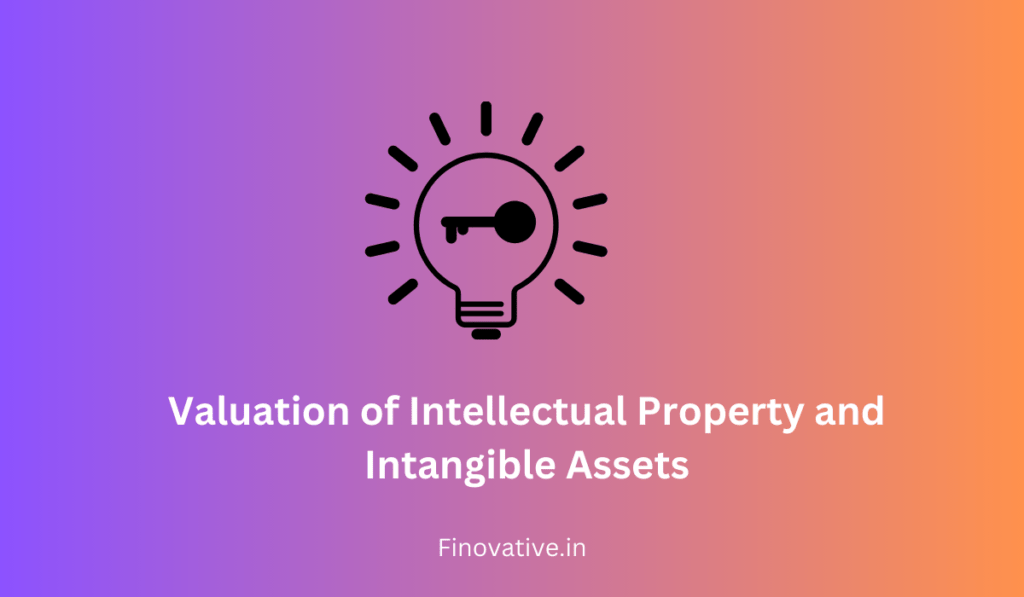In today’s knowledge-based economy, intellectual property (IP) and intangible assets have emerged as potent drivers of value and innovation. Understanding how to evaluate and assign value to these intangible treasures is essential for businesses, investors, and decision-makers. This comprehensive guide will delve into IP and intangible asset valuation, exploring methods, challenges, and the pivotal role these valuations play in modern economies.
The Growing Significance of IP and Intangible Assets
Intellectual property and intangible assets have become indispensable assets in the business world for several reasons:
- Innovation Catalyst: IP assets like patents, trademarks, and copyrights encourage innovation by protecting inventors’ rights and rewarding creativity.
- Competitive Edge: They provide a competitive edge by securing exclusive rights to products, technologies, and branding.
- Revenue Generation: Intangible assets, such as customer lists, licenses, and proprietary software, often generate significant revenue streams.
- Investment Magnet: Businesses with strong IP portfolios are attractive to investors and can secure financing more easily.
- Legal Protection: IP assets act as shields against infringement and protect against unauthorized use or reproduction of proprietary materials.
Intellectual Property and Intangible Asset Valuation: An Overview
Valuing intellectual property and intangible assets is a complex but essential process. It involves determining the worth of these non-physical assets, which can be intangible assets or IP assets such as patents, trademarks, copyrights, and trade secrets.
Types of Intellectual Property and Intangible Assets
- Intellectual Property (IP) Assets: These include patents, trademarks, copyrights, and trade secrets. Each type of IP has unique characteristics and requires specific valuation methods.
- Intangible Assets: These encompass a broader range of assets, including customer relationships, brand reputation, proprietary software, contracts, licenses, and goodwill. Valuing intangible assets often relies on income and market approaches.
Methods of Valuation
There are three primary methods for valuing intellectual property and intangible assets:
- Cost-Based Valuation: This method assesses the cost incurred to create or acquire the asset. It includes research and development expenses, legal fees, and other direct costs. While it provides a clear starting point, it may not reflect the asset’s true market value.
- Market-Based Valuation: The market-based approach compares the asset to similar assets in the market. This method is most effective when there is a robust market for similar assets, but it can be challenging when dealing with unique or niche assets.
- Income-Based Valuation: The income-based approach estimates the asset’s value based on the income it generates or is expected to generate in the future. This method involves projecting future cash flows and discounting them to their present value.
Key Considerations in Valuation
Several critical considerations influence the valuation of intellectual property and intangible assets:
- Expertise: Valuation often requires specialized knowledge, and it’s crucial to engage professionals or experts experienced in valuing the specific type of asset.
- Timing: The timing of the valuation matters. Depending on your goals, you might need a current, retrospective, or prospective valuation.
- Market Dynamics: Understand the market conditions and demand for your type of asset. A competitive market can result in higher valuations.
- Asset Portfolio: Consider how the asset fits into your overall portfolio. The synergy between different assets can affect their collective value.
- Legal Protection: The strength and scope of legal protection (e.g., patents, trademarks) can significantly influence the asset’s value.
- Future Income Streams: Evaluate the potential for future income from the asset. Factors like market growth and technology advancements can impact this.
Valuing Intellectual Property Assets
Let’s delve deeper into the valuation of specific IP assets, including patents, trademarks, copyrights, and trade secrets.
1. Patent Valuation
Patents grant inventors exclusive rights to their inventions for a specified period, typically 20 years from the date of filing. Patent valuation considers factors like:
- Technological Advancement: The uniqueness and potential technological advancement offered by the patent.
- Market Demand: The demand for products or technologies related to the patent.
- Economic Life: The remaining life of the patent and its potential for generating income.
- License Agreements: Previous licensing agreements or royalty rates for similar patents.
2. Trademark Valuation
Trademarks protect brand identity, logos, and slogans. Valuation of trademarks involves:
- Brand Recognition: The degree of brand recognition and its impact on market share.
- Market Position: The market position and reputation of the brand.
- Geographic Scope: The geographic scope and exclusivity of the trademark.
- License Agreements: Previous licensing agreements or royalty rates for similar trademarks.
3. Copyright Valuation
Copyrights protect original creative works, including literary, artistic, and musical works. Factors in copyright valuation include:
- Market Demand: The demand for the copyrighted work and its potential for future use.
- Copyright Term: The remaining copyright term and potential for income generation.
- License Agreements: Previous licensing agreements or royalty rates for similar copyrights.
- Market for Similar Works: The market for similar copyrighted works.
4. Trade Secret Valuation
Trade secrets protect confidential business information, processes, and formulas. Valuation of trade secrets considers:
- Uniqueness: The uniqueness and competitive advantage provided by the trade secret.
- Protection Measures: The level of protection and secrecy surrounding the trade secret.
- Economic Benefit: The economic benefit and income potential derived from the trade secret.
- Market Demand: The demand for products or services enabled by the trade secret.
Valuing Intangible Assets
Now, let’s explore the valuation of broader intangible assets, which can encompass a wide range of items beyond traditional IP.
1. Customer Relationships
Valuing customer relationships involves assessing the value of existing customer bases, subscriber lists, and client rosters. Key factors include:
- Customer Loyalty: The degree of customer loyalty and likelihood of repeat business.
- Customer Acquisition Cost: The cost to acquire similar customers in the market.
- Customer Churn Rate: The rate at which customers are lost and need to be replaced.
2. Brand Reputation
Brand reputation is the perception and recognition of a company or product in the market. Valuation of brand reputation considers:
- Market Position: The brand’s position in the market and its impact on customer choices.
- Brand Equity: The added value customers associate with the brand.
- Market Research: Data and surveys assessing brand perception.
3. Proprietary Software
Valuing proprietary software involves assessing the worth of software applications developed for specific purposes. Factors include:
- Market Demand: The demand for software of a similar nature or functionality.
- Development Costs: The costs incurred in developing and maintaining the software.
- License Agreements: Previous licensing agreements or revenue generated from the software.
4. Contracts and Agreements
Contracts and agreements, such as licensing agreements, supply contracts, or exclusive distribution agreements, can have significant value. Valuation includes:
- Contract Terms: The terms, duration, and revenue associated with the contracts.
- Contractual Obligations: The obligations and commitments of the parties involved.
- Market Value: The market value of similar contracts or agreements.
5. Goodwill
Goodwill represents the intangible value of a business above and beyond its tangible assets. It encompasses factors such as:
- Brand Reputation: The reputation and recognition of the business in the market.
- Customer Relationships: The value of existing customer relationships.
- Market Position: The business’s position and competitive advantage.
Challenges in Valuing IP and Intangible Assets
Valuing intellectual property and intangible assets presents several challenges:
- Subjectivity: Valuation often involves subjective judgments and assumptions, especially when projecting future income or comparing to similar assets.
- Data Availability: Access to accurate and relevant data, especially for market-based valuation, can be limited.
- Changing Market Conditions: Rapid changes in technology and market conditions can render previous valuations obsolete.
- Legal Complexity: Intellectual property rights and legal protection vary, making it essential to consider the strength of IP when valuing it.
- Interconnectedness: The value of intangible assets can be closely tied to other assets, making it challenging to isolate their worth.
- Human Capital: The knowledge and expertise of individuals within an organization can be valuable but challenging to quantify.
Conclusion
The valuation of intellectual property and intangible assets is a multidimensional process that plays a pivotal role in modern economies. Accurately assessing the value of these assets empowers businesses to make informed decisions, secure investments, negotiate transactions, and protect their intellectual capital.
However, the intricacies of IP and intangible asset valuation demand a nuanced approach, often requiring the expertise of professionals with specific knowledge in intellectual property, finance, and valuation methods. As the world continues to evolve in the direction of knowledge-based economies, the importance of understanding and harnessing the value of intellectual property and intangible assets will only grow, shaping the future of businesses and innovation.


